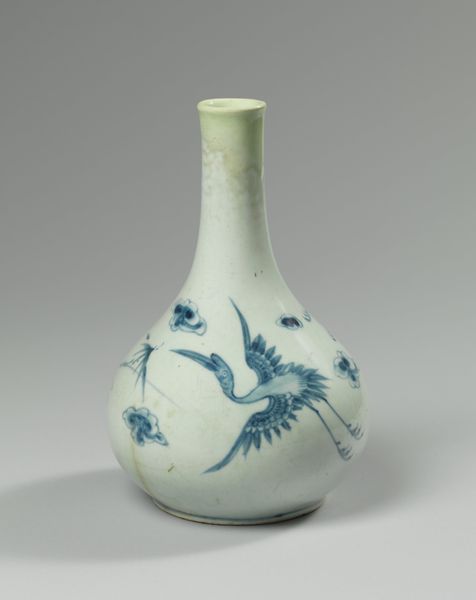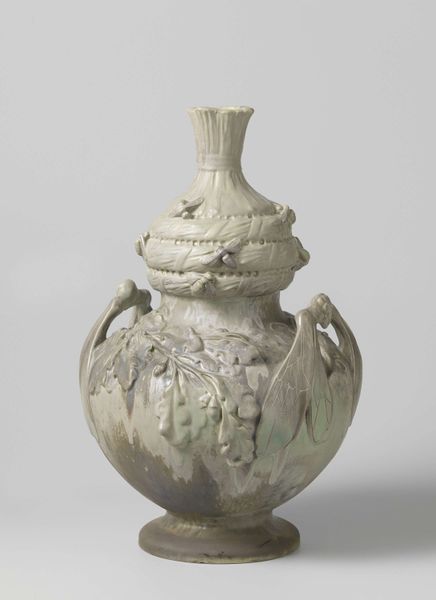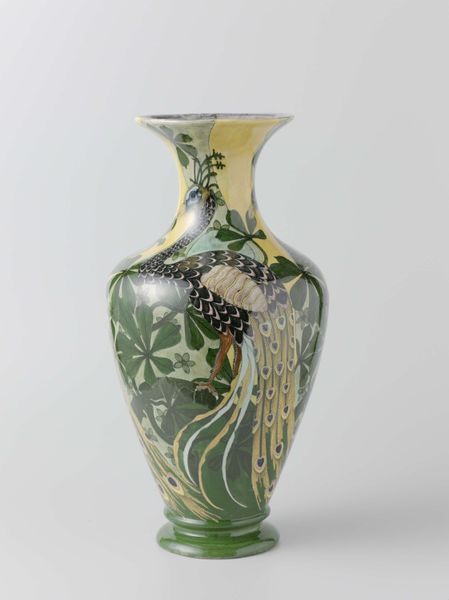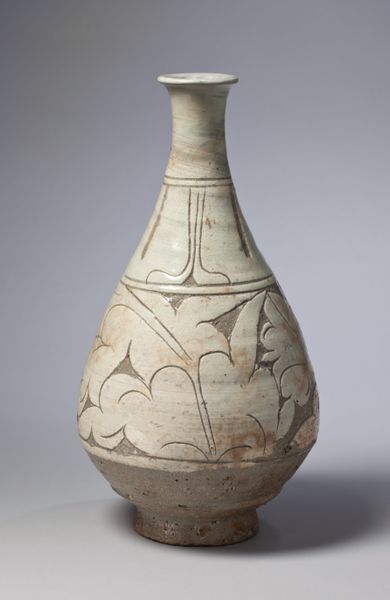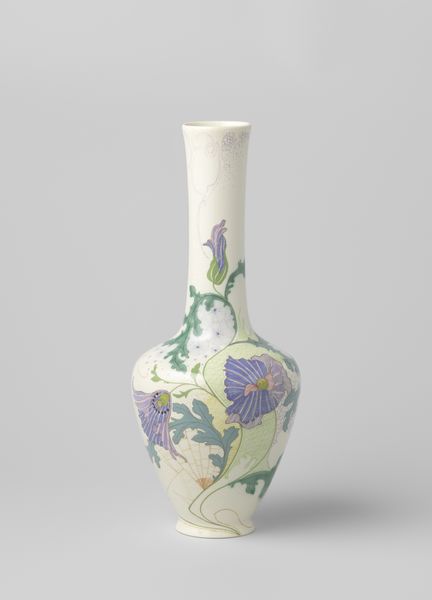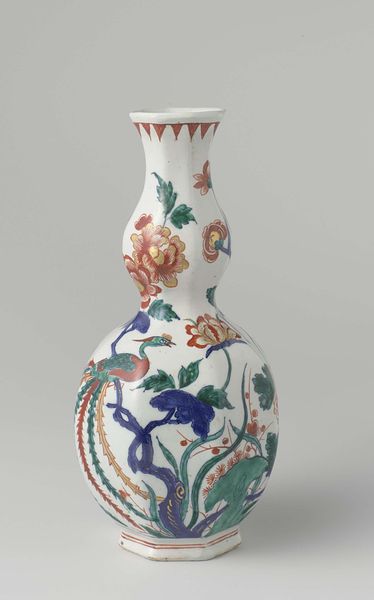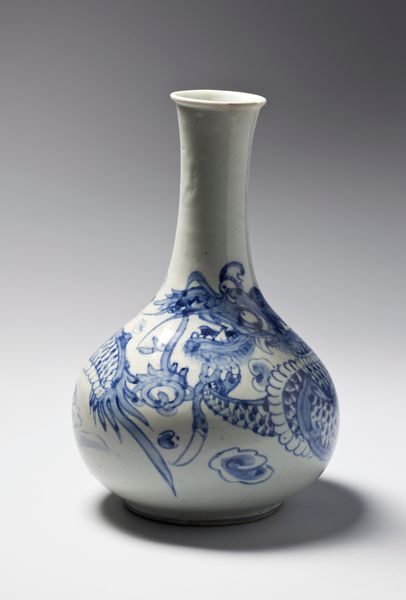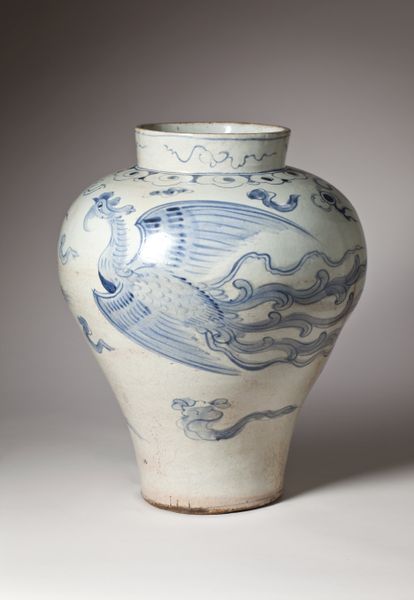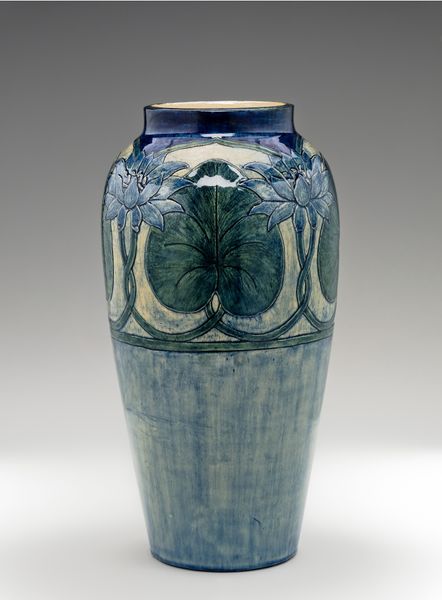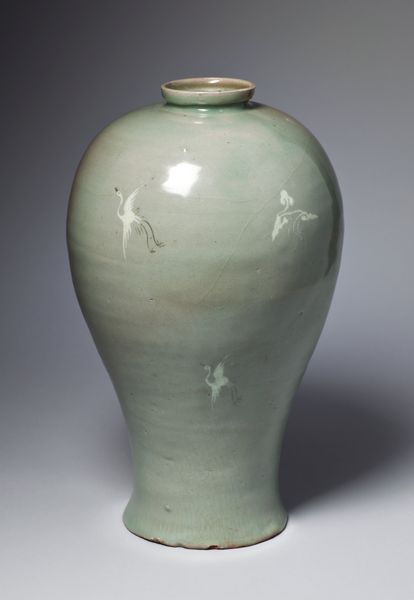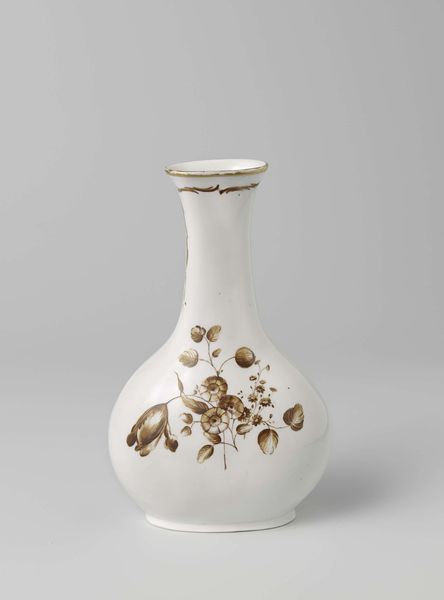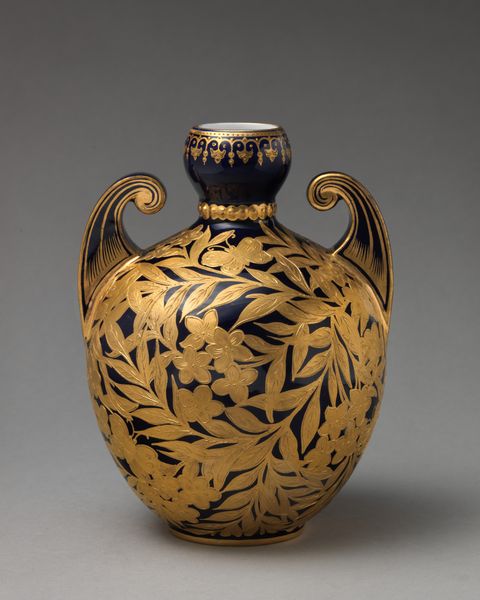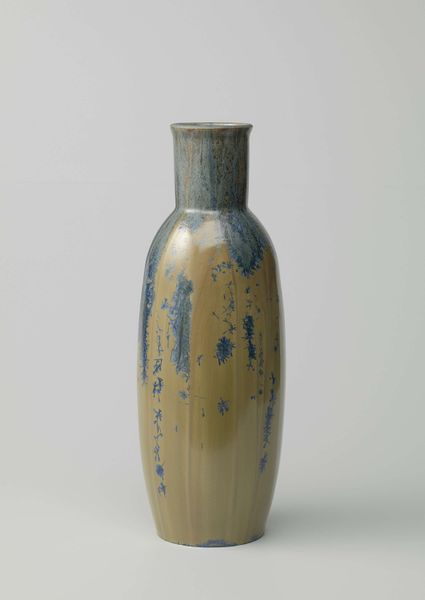
ceramic
#
art-nouveau
#
ceramic
#
figuration
#
stoneware
#
orientalism
#
ceramic
Dimensions: height 29.1 cm, diameter 21.0 cm
Copyright: Rijks Museum: Open Domain
Editor: We're looking at "Vaas met paradijsvogel," or Vase with Bird of Paradise, made between 1895 and 1904 by Firma Wed. N.S.A. Brantjes en Co. It's a ceramic piece, and what strikes me immediately is the kind of whimsical, almost dreamy quality of the bird against the pale background. How do you interpret this work? Curator: This piece really speaks to the complicated exchange between Europe and Asia during the late 19th century. The Art Nouveau style, while European, here embraces Orientalism – a Western fascination with Asian aesthetics. How do you think the artist negotiates that line between appreciation and appropriation? Editor: That's a great point! I hadn't considered the potential for appropriation. The bird itself, while beautifully rendered, feels somewhat detached from its cultural context. It's more of a decorative motif than a symbol, wouldn't you agree? Curator: Exactly. And think about who was buying these pieces. Wealthy Europeans, often from colonial powers, who wanted exotic objects for their homes. This vase becomes a signifier of status, power, and access to other cultures. But what is lost when those cultures are flattened into mere aesthetics? Editor: So, this vase isn't just a pretty object, but also a reflection of unequal power dynamics at the time. It makes me wonder about the labour practices involved in creating such a piece, too. Curator: Precisely! Considering those historical and social dimensions gives the piece so much more depth. It challenges us to look beyond its beauty and grapple with the complexities of cultural exchange. Editor: I’ll never look at Art Nouveau the same way again. It's a great reminder that art is never truly separate from its context. Curator: Indeed, and that engaging with art means engaging with history, politics, and power.
Comments
No comments
Be the first to comment and join the conversation on the ultimate creative platform.
